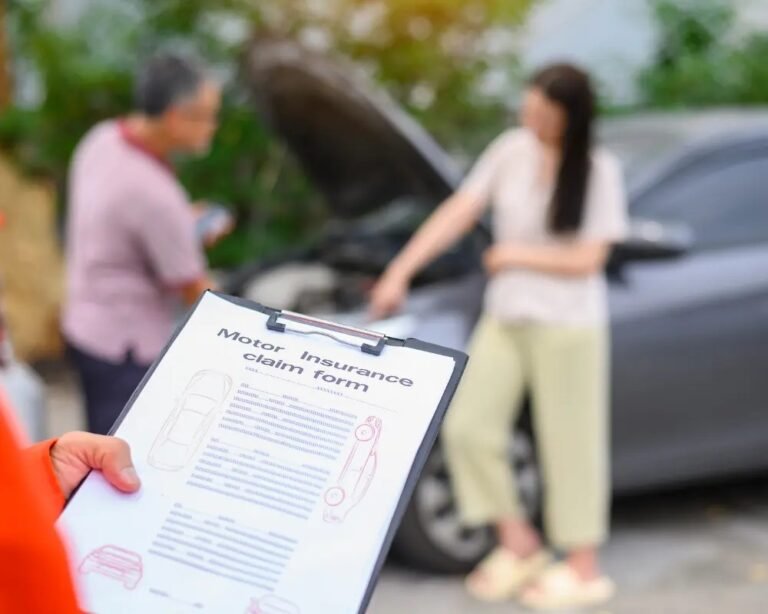Accidents happen, and when they do, one of the most important things a car owner can do is file a car insurance claim. Whether it’s a minor fender bender or a major collision, knowing how to properly file a claim will ensure that the process goes smoothly, and you get the coverage you’re entitled to. This guide will walk you through the essential steps to file a car insurance claim efficiently and effectively.
1. Assess the Situation and Ensure Safety
Before filing a car insurance claim, the first priority is to ensure your safety and that of anyone involved in the accident. If there are injuries, call for medical assistance immediately. For minor accidents, move the vehicles to a safe location if possible. If the accident is severe, leave the vehicles where they are and wait for authorities.
Key Tips:
Turn on hazard lights to alert other drivers of the situation.
If possible, take photos of the accident scene before moving the vehicles.
Call the police to file an official report, especially if there’s significant damage or injury.
2. Gather Important Information
Once everyone is safe, start gathering the necessary details about the accident. This information will be crucial when filing your car insurance claim. Proper documentation ensures that your claim is processed quickly and accurately.
Key Information to Collect:
Other driver’s information: Name, contact details, driver’s license number, and insurance information.
Vehicle details: Make, model, year, license plate numbers, and the color of all vehicles involved.
Accident details: Date, time, and location of the accident.
Witness information: If there are witnesses, collect their contact information and statements.
3.Take Photos and Document the Damage
Photos and videos can provide strong evidence for your claim. Be sure to capture clear images of the damage to all vehicles, license plates, and any relevant road conditions or signs that may have contributed to the accident.
Key Tips:
Take multiple angles of the damage to your car and the other vehicles.
Include pictures of any debris, skid marks, or road hazards.
If there are any visible injuries, document those as well (with consent).
4. Notify Your Insurance Company
After ensuring safety and collecting all the necessary information, the next step is to notify your insurance company about the accident. The sooner you report the accident, the better, as most insurers have a time limit for filing claims.
Key Tips:
Call the insurance company’s claims hotline or use their app or website if they offer online claim filing.
Provide all the details you gathered, including the accident report from the police if available.
Be honest and straightforward when describing the events leading to the accident. Any discrepancies could delay or complicate your claim.
5. File a Police Report (If Necessary)
In certain situations, you’ll need to file a police report, especially in accidents that involve significant damage, injury, or if there’s a dispute over fault. In many jurisdictions, having a police report is a requirement for filing an insurance claim.
Key Tips:
Contact the police at the scene to file a report.
If the police do not come to the scene, visit a local police station to file the report in person.
Request a copy of the report for your records and to submit to your insurance company.
6. Work with Your Claims Adjuster
After notifying your insurance company, a claims adjuster will be assigned to your case. The adjuster’s job is to evaluate the damage, investigate the accident, and determine the payout for your claim. Be prepared to answer their questions and provide any additional information they may need.
Key Tips:
Stay in contact with the adjuster and be responsive to their requests for more details or documents.
Be present when the adjuster inspects the damage to your vehicle to ensure nothing is missed.
Ask for clarification if any part of the claims process is unclear.
7. Get Estimates for Repairs
Once the claims adjuster has assessed the damage, you may need to get estimates for the repairs. Some insurance companies have preferred repair shops, while others allow you to choose any shop you like.
Key Tips:
If you choose your own repair shop, make sure the shop is reputable and provides a detailed estimate.
Some insurance companies will provide a list of authorized repair shops to streamline the process.
Compare multiple estimates if allowed to ensure you’re getting the best value.
8. Review the Settlement Offer
Once the damage has been assessed and repair estimates are in, the insurance company will provide a settlement offer. This offer represents the amount they will pay for the repairs or, in the case of a total loss, the value of the car.
Key Tips:
Carefully review the settlement offer to make sure it covers all the damage and repairs.
If you feel the settlement offer is too low, you can negotiate or dispute it by providing additional evidence or getting another estimate.
Be aware that your insurance policy may require you to pay a deductible before the insurer covers the remaining costs.
9. Coordinate the Repairs
Once the claim is settled, it’s time to arrange for repairs. Depending on your policy, you may have to pay out of pocket and be reimbursed later, or the insurance company may pay the repair shop directly. Be sure to stay in touch with the repair shop and keep your insurance company updated on the progress.
Key Tips:
Keep a record of all receipts related to the repair, including parts, labor, and any additional expenses like a rental car.
If you’re dissatisfied with the repairs, notify your insurance company right away. Some insurers offer a guarantee on repairs made through their network.
10. Understand Your Policy and Coverage
Lastly, it’s important to have a clear understanding of your car insurance policy and what’s covered before you file a claim. Different types of coverage (e.g., collision, comprehensive, liability) offer varying levels of protection.
Key Tips:
Review your policy to know what’s covered and what your deductible is for each type of claim.
If you’re unsure about your coverage, call your insurance company for an explanation.
Regularly update your policy to reflect changes in your driving habits, vehicle use, or additional drivers.
Simplify the Claims Process with Preparation
Filing a car insurance claim doesn’t have to be complicated or stressful if you’re prepared and informed. By following this step-by-step guide, you can navigate the claims process with confidence, ensuring that your car is repaired quickly and fairly. Always remember to document everything, stay in contact with your insurance company, and take the necessary steps to ensure you’re fully covered. This proactive approach can help you save time, avoid complications






